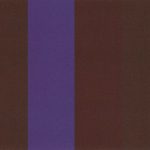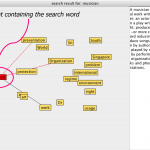SIGGRAPH 2017 Distinguished Artist Award: Edmonds
Awardee(s):
Award:
- Distinguished Artist Award
Description:
The Association for Computing Machinery’s Special Interest Group on Computer Graphics and Interactive Techniques (ACM SIGGRAPH) is pleased to announce Ernest Edmonds, PhD, of De Montfort University, as the 2017 recipient of the Lifetime Achievement Award in Digital Art.
Established in 2009 and awarded annually, the Lifetime Achievement Award in Digital Art recognizes artists who have created substantial and important bodies of work that significantly advance aesthetic content in the field of digital art.
Selected as this year’s recipient for his major contributions to the development of computational art and to the broader field of contemporary art from the late 1960s, Ernest Edmonds is the 10th recipient of the award. Past winners include Jean Pierre Hébert, Harold Cohen, Steina Vasulka, Lynn Hershman Leeson and Roman Verostko.
“I was thrilled to learn that I will be given this prestigious award and to join such an illustrious community,” said Edmonds. “The list of previous winners is truly impressive.”
Ernest’s work represents an important landmark in the field of generative and interactive art. By applying color theory, computational logic and programmed systems to his work, he brought together the structural research of Biederman and the Constructivists for the first time, and took them to a new previously unexplored level that encompasses the notion of time, color and structure.
Ernest Edmonds is also an international expert on human-computer interaction who specializes in creative technologies for creative uses. His record of achievement in the field of interdisciplinary research is long and distinguished particularly in fostering the development of HCI since 1970: in 1982, he founded the Human Computer Interface Research Centre (HCIRU) Leicester Polytechnic and later, in 1986, the Loughborough University Computer Human Research Centre (LUTCHI) Research Centre. In 2003, he established the Creativity and Cognition Studios (CCS) at the University of Technology, Sydney and continues to direct it in parallel with his directorship of the Institute of Creative Technologies (IOCT) in Leicester.
Digital technology has enhanced and stimulated Edmonds’ creativity. By writing code to create his art since the 1960s, works such as “Fragment” and “Sydney” illustrate how the constructivist concepts developed through the use of video tape, creating a kind of computer generated film; other works such as “Rotterdam A and B” (1989) exemplify a kind of digital art which is more aggressively generative in nature, owing to digital technology and the possibility to run a program virtually indefinitely. The ‘digital’ gave generative art new possibilities and brought therefore new thoughts and opportunities in Edmonds’ creativity, allowing him to generate a system through which the artwork has a life of its own where color is selected, manipulated, and changes with no restrictions of time. This represents an important step in the generative art field, the consequences still being explored in the present time.
“We are truly honored to recognize Ernest Edmonds for his extensive, pioneering work,” said ACM SIGGRAPH Art Award Chair Sue Gollifer.
Source:
- ACM SIGGRAPH Press Release
Artwork(s):
-

Broadway One
Artist(s): [Edmonds] [Fell]
Art Categories: [2D & Wall-Hung]
[SIGGRAPH 2004] -

Art Systems: 1968 to 2018
Artist(s): [Edmonds]
Art Categories: [2D & Wall-Hung]
[SIGGRAPH 2018,SIGGRAPH Artworks in the Victoria & Albert Museum]
Learning Presentation(s):

Type: [Art Papers & Presentations]
Audiovisual Discourse in Digital Art
Presenter(s): [Edmonds] [Pauletto]
[SIGGRAPH 2004]

Type: [Art Papers & Presentations]
Living Laboratories: Making and Curating Interactive Art
Presenter(s): [Muller] [Edmonds]
[SIGGRAPH 2006]

Type: [Art Papers & Presentations]
New Interactions: Communities and Information
Presenter(s): [Gwilt] [Rackham] [Vanouse] [Edmonds] [Selker]
[SIGGRAPH 2006]

Type: [Posters]
A context visualiser: the generative website project
Presenter(s): [Amitani] [Edmonds]
[SIGGRAPH 2007]




